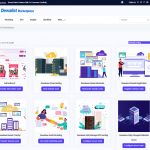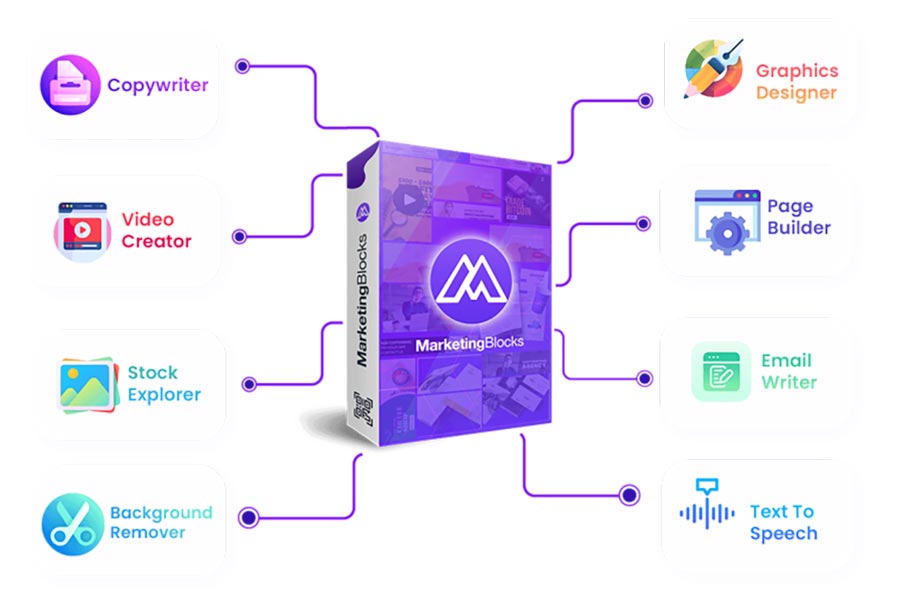Maximising ROI with Email Marketing in the Digital World

Introduction
Email marketing uses communication to promote products, services, or brand awareness to a target audience. It is an effective and cost-efficient method of reaching out to potential customers and building relationships with them. Email marketing can be used for various purposes, including announcing new products or services, promoting sales and discounts, providing educational content, and keeping subscribers informed about the latest industry news and trends.
Email marketing has become crucial to any marketing strategy in today’s digital landscape. With the growth of social media and other digital channels, email marketing offers businesses a direct and personalised way to connect with their target audience. Furthermore, email marketing boasts a higher return on investment than other digital marketing methods, making it an indispensable aspect of a company’s marketing plan.
“The average open rate for all industries is around 24%.”
— Litmus
This blog aims to provide an overview of email marketing in the digital age. We will explore the evolution of email marketing, the best practices for success, and the latest trends and challenges in this field. Our goal is to help marketers and business owners understand the benefits of email marketing and to provide them with the knowledge and tools they need to create effective email marketing campaigns. This article will provide valuable insights and guidance if you’re starting with email marketing or looking to improve your existing campaigns.
The Evolution of Email Marketing
History of Email Marketing
Email marketing had existed since the early days of the Internet when businesses started using email to communicate with customers and prospects. At first, email marketing was straightforward, with essential text-based emails being sent to subscribers. Over time, email marketing evolved to include images, videos, and other multimedia content, as well as more sophisticated targeting and segmentation techniques.
Development of Email Marketing in the Digital Age
The digital era has only improved the sophistication and efficiency of email marketing. With the emergence of social media, mobile devices, and other digital marketing channels, companies now have vast information and insights about their target audience. This enables them to craft highly personalised email campaigns tailored to their audience’s needs and preferences. Furthermore, technological advancements have made automating email campaigns and tracking their performance easier, allowing businesses to optimise their efforts and achieve superior results.
“The use of mobile devices to check email is on the rise, with 49% of email opens taking place on mobile devices”
— Litmus
Fundamental Changes and Advancements in Email Marketing Technology
Some of the critical changes and advancements in email marketing technology include:
- The use of customer data and analytics to create highly targeted and personalised email campaigns
- The ability to automate and schedule email campaigns, making it easier to reach subscribers at the right time and place
- The integration of email marketing with other digital marketing channels, such as social media, to reach customers across multiple touchpoints
- The integration of artificial intelligence and machine learning to enhance the precision of email targeting, refine email content, and elevate campaign outcomes
- Mobile-friendly design and responsive templates ensure emails look great and are easily read on any device.
The progression of email marketing in the digital era has been influenced by the desire to maintain a competitive edge and connect with consumers through cutting-edge methods. Regardless of your level of experience in marketing, it’s crucial to stay informed of these developments and trends and continually explore new ways to enhance your email marketing strategies.
Best Practices for Email Marketing in the Digital Age
Segmentation and Personalisation
One of the essential best practices for email marketing in the digital age is segmentation and personalisation to create highly targeted and personalised campaigns. This means dividing your email list into smaller groups based on shared characteristics like location, interests, or behaviour. By targeting specific segments of your audience with relevant and personalised content, you can improve the effectiveness of your campaigns and increase engagement and conversions.
Creating an Engaging Subject Line
The subject line plays a crucial role in determining the success of an email campaign, as it can make or break the likelihood of your email being opened. To make it effective, keep it brief, direct, and eye-catching. Utilise active language like “Grab Your Discount Now” or “Attend Our Exclusive Sale,” and contemplate incorporating symbols or emojis to differentiate your email in the inbox.
“Personalised subject lines are 26% more likely to be opened compared to generic subject lines.”
— Campaign Monitor
Optimising the Content of Your Email
“The content of an email is a key factor in determining its success. To make the most of your email content, keep it straightforward and brief, and concentrate on a single, unambiguous call-to-action. Utilise images and videos to intersperse text and make your email more visually appealing. Additionally, ensure that your call-to-action is noticeable and straightforward, like a “Buy Now” button or a connection to your website.
Timing and Frequency of Your Emails
The timing and frequency of your emails can also significantly impact their success. To optimise timing, consider your target audience’s schedule and the best time to reach them. Weekdays are a good time to send emails, as people are likelier to check their inboxes at work. As for frequency, it’s essential to balance sending too many emails and needing more. Aim to send emails regularly, but be mindful of how often you’re sending them, and make adjustments based on the results of your campaigns.
Measuring and Analysing the Success of Your Campaigns
Finally, measuring and analysing their success is essential to optimise your email marketing campaigns effectively. Use tools such as open rates, click-through rates, and conversion rates to track the effectiveness of your campaigns. Then, analyse your campaigns’ results and make adjustments based on the insights you gather. This will help you continually improve your campaigns and achieve better results.
In conclusion, by implementing these best practices for email marketing in the digital age, you can ensure that your campaigns are impactful, reaching your target audience and delivering results. Regardless of your level of experience, it’s critical to keep up with the current trends and advancements in email marketing and continually seek new ways to improve your campaigns.
Integrating Email Marketing with Other Digital Marketing Channels
How Email Marketing Works with Social Media
You can create a well-rounded digital marketing approach by incorporating social media into your email marketing strategy. Including links to your social media pages in your emails can attract traffic and engage with your followers. Promoting your email campaigns on social media platforms can broaden your reach and grow your email subscriber list.
The Importance of a Mobile-Friendly Email Design
In the digital age, it’s critical to have a mobile-friendly email design, as more and more people are accessing their emails on mobile devices. A mobile-friendly email design should be simple and clean, with a single-column layout and large, easily clickable buttons. Additionally, make sure that the text is easy to read on a small screen, and consider using responsive design to automatically adjust the layout of your email based on the device it’s being viewed on.
Combining Email Marketing with Influencer Marketing
Influencer marketing is highly effective for expanding your reach and raising brand recognition. When integrated with email marketing, it can generate even better outcomes. By collaborating with influencers in your field, you can leverage their audience and reach a broader crowd. Furthermore, by including influencer content in your emails, you can add credibility and pertinence to your campaigns, enhancing engagement and boosting conversions.
Integrating Email Marketing with Content Marketing
Finally, email marketing can effectively integrate content marketing to create a comprehensive strategy. By including links to your latest blog posts or videos in your emails, you can drive traffic to your website and promote your content. Additionally, you can use email marketing to promote your content directly by sending out newsletters or promotional emails that feature your latest content. This can help you build a stronger relationship with your audience and keep them engaged and interested in your brand.
In conclusion, integrating email marketing with other digital marketing channels can help you to reach a wider audience, build stronger relationships with your customers, and achieve better results from your marketing campaigns. So whether you’re looking to reach new audiences through social media, reach mobile users with a mobile-friendly email design, tap into influencer audiences, or promote your content, you can integrate email marketing into your overall digital marketing strategy effectively.
Emerging Trends in Email Marketing
Interactive Email Content
The interactive email content is a growing trend in email marketing that allows recipients to interact with emails in real time. This includes hover effects, carousels, and accordions that enable recipients to explore content without leaving the email. This content can increase engagement, provide a more immersive experience, and drive conversions.
Artificial Intelligence and Email Marketing
Artificial intelligence transforms email marketing, making it more personalised and effective. AI-powered technologies can be used to analyse data and personalise emails based on factors such as recipient behaviour, location, and interests. This can result in more targeted campaigns that drive higher engagement and conversion rates.
The Rise of Video Emails
Video is a highly engaging form of content growing in popularity in email marketing. Video emails can be used to deliver product demonstrations, how-to tutorials, and promotional content, and they have been shown to increase open rates, click-through rates, and conversions. However, when creating video emails, keeping them short and to the point and ensuring they are optimised for mobile viewing is essential.
Chatbots and Email Marketing
Chatbots are automated messaging systems that can interact with customers and provide information and support. In email marketing, chatbots can be integrated into emails to offer real-time support and answer customer questions. This can increase customer satisfaction and drive conversions by providing a more personalised and immediate experience.
In conclusion, these emerging trends in email marketing are helping businesses to stay ahead of the curve and deliver more engaging and effective campaigns. Whether you’re looking to create interactive content, harness the power of artificial intelligence, incorporating video into your emails, or use chatbots to provide real-time support, there are many ways to stay ahead of the curve and ahead of your competition.
Common Challenges in Email Marketing and How to Overcome Them
Email Deliverability Issues
One of the biggest challenges in email marketing is ensuring that your emails land in your subscribers’ inboxes. This can be a tricky challenge as numerous factors, such as spam filters, blacklists, and email client settings, can impact email deliverability. To combat these obstacles, it’s crucial to thoroughly understand best practices for email deliverability and utilise tools such as email authentication and list cleaning to guarantee that your emails reach their designated recipients.
Low Open and Click-Through Rates
Another common challenge in email marketing is low open and click-through rates. This can be due to several factors, including a weak subject line, poor email content, or a lack of personalisation. To overcome these challenges, it’s essential to focus on creating engaging subject lines, optimising your email content, and personalising your emails to meet the needs and interests of your subscribers.
“The average click-through rate (CTR) for all industries is around 3.2%.”
— Litmus
Lack of Engagement and Subscriber Loyalty
A lack of engagement and subscriber loyalty can be a major challenge in email marketing. To overcome this, building relationships with your subscribers and providing valuable content that meets their needs and interests is essential. This can include regular newsletters, exclusive promotions, and valuable content such as ebooks and webinars.
Solutions for Overcoming Common Challenges in Email Marketing
There are many solutions for overcoming common challenges in email marketing, including:
- Develop a solid email marketing strategy with clear goals and a target audience.
- Regularly test and optimise your emails to improve deliverability and engagement.
- Segmenting your email list to deliver more personalised and relevant content.
- Incorporating interactivity into your emails to increase engagement.
- Integrating your email marketing with other digital marketing channels to drive better results.
- Analysing your email marketing metrics and making data-driven decisions to improve your campaigns.
In conclusion, these are some of the common challenges in email marketing and the solutions for overcoming them. By understanding these challenges and implementing the solutions, businesses can create more effective and successful email marketing campaigns that drive results and build loyal relationships with their subscribers.
Conclusion
In this blog, we covered the significance of email marketing in the digital era, its development, the most effective practices in the digital era, incorporating email marketing with other digital marketing techniques, and the latest trends in email marketing. We also looked into the prevalent obstacles in email marketing and ways to tackle them.
Email marketing is crucial for companies striving to establish connections with their desired customers and foster long-lasting relationships. With the fast-paced advancements in technology and changes in the digital landscape, businesses must stay informed of the latest trends and best practices in email marketing to ensure their campaigns are successful.
To sum up, the development of email marketing in the digital era is in a state of flux, and businesses must stay updated and respond to these changes. By implementing best practices, integrating email marketing with other digital marketing channels, and staying up-to-date with industry trends, businesses can create successful and effective email marketing campaigns that drive results and build lasting relationships with their subscribers. We encourage you to stay informed and continue to learn about the latest developments in email marketing and to use this knowledge to enhance your email marketing efforts.
Be sure to check out our other related posts if you enjoyed this one:
- Supercharge Your Business: Mastering Cross-Channel Marketing Magic!
- Influence: The Psychology of Persuasion by Robert B. Cialdini – A Word Marketing Book Summary
- Building Trust: Brand Awareness & Reputation
- Unlocking Success: Data-Driven Targeted Advertising
- The AI Revolution: Transforming Marketing & Advertising
- Introducing Our New and Improved Dewalist Marketplace Design
- Ad Ethics: Balancing Persuasion with Responsibility
- Email Showdown: Mandrill vs Mailchimp Features
- The Future of Digital Out-of-Home (DOOH) Advertising
- Revolutionising Marketing with Virtual & Augmented Reality
Sign up for updates on this blog and our latest marketing posts if you enjoyed reading this one.
Share our blog content with your friends and colleagues via Facebook, Twitter, Pinterest, LinkedIn, email or WhatsApp links below and help them stay informed about the latest insights on business, marketing, finance, lifestyle, and society. Let’s build a knowledge-sharing community and empower each other to achieve our goals.
Credits
- Featured photo by Vlada Karpovich on Pexels.









